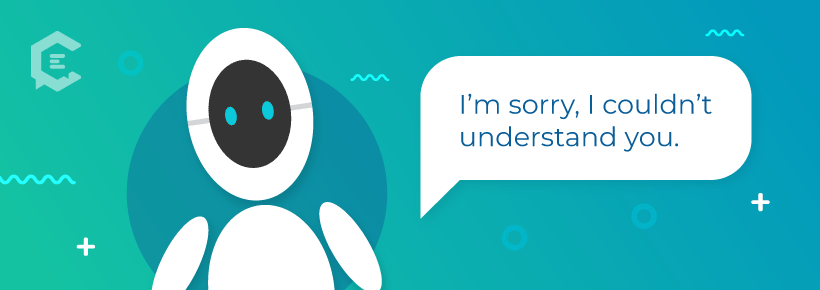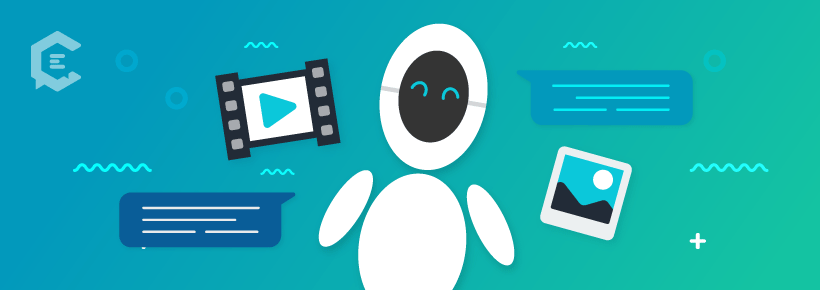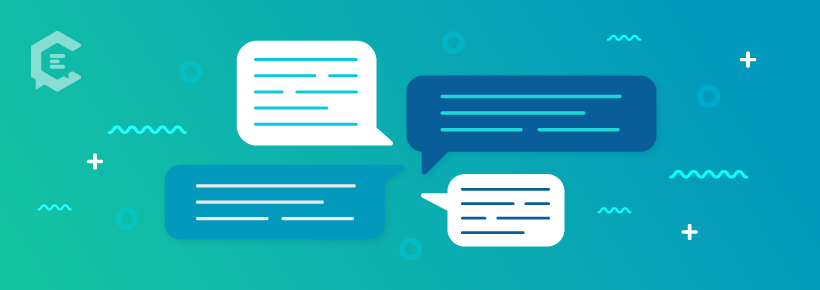Chatbots: What are they exactly? And why are they all the rave today?
If you’re unfamiliar with what chatbots are and how they work, you might be surprised to discover that you have probably already talked to one. You can encounter chatbots everywhere online, from Facebook Messenger to Slack to e-commerce websites.
This article will cover the overall chatbot industry and discuss how you can improve your chatbot to boost your content marketing success.
The Chatbot Industry
Believe it or not, chatbots have become a $1.23 billion industry — and it is only expected to grow throughout 2019, and beyond. The chatbot ecosystem is already incredibly diverse in terms of design, personalities, and functionality.
Why? Today’s web and social media traffic is moving to mobile, and chatbots are proving to be a solid solution for keeping up with mobile users. In fact, 70 percent of consumers prefer receiving customer support from a chatbot than from a live representative.
Many businesses still have yet to really see the value of using chatbots. However, 80 percent of businesses say they expect to leverage one for their marketing efforts in the next two years. Ambitious? Maybe… But this also presents a challenge: There are far too few experts available to keep up with the demand of businesses that want a bot designed and built. As a result, many businesses are and will be forced to learn how to leverage their chatbots successfully through trial and error and reporting.
Why You Should Set Goals and KPIs
Before we dive into some tips on how to become a chatbot expert, your first step should be to set some goals. Setting goals will not only set your business up for success, but it will also help you identify areas for improvement and how to better analyze, optimize, and make your chatbot intelligent, to better serve your customers and maximize your lead generation efforts.
Many businesses misinterpret the overall goal of their chatbots. For example, some businesses might consider the chatbot to fall under the technical, development, or “IT” arena of the business.
Yes, designing and building a chatbot will likely require the help of a developer; however, the core function of your chatbot falls within your lead generation and marketing strategy, specifically your content marketing strategy. Chatbots are considered interactive content marketing or AI-powered content marketing.
Now that you understand why it’s so important to set goals, it’s important to ensure that those goals align with overall business goals. For example, if you designed a chatbot to help your business generate more leads, or respond to customer support inquiries faster, then establish key performance indicators (KPIs) to help track your chatbot’s level of success and accuracy in these areas.
10 Tips on How to Analyze and Improve Your Chatbot
1. Track revenue attribution
One example of how you can track revenue attribution of your chatbot is to set up goals in Google Analytics, or another analytics application or tool. You can set up outbound links from your chatbot to monitor and track revenue or conversion traffic. This works the same way as any other lead or conversion-tracking tool.
2. Measure a “self-service” success metric
Again, let’s refer back to goals for just a moment. Remember why you set your chatbot up to begin with… Was it to provide quick and efficient customer support? Generate leads? Point your visitors to the right content?
All in all, your chatbot should be providing users with a specific use case. It is important to understand why a user is engaging with your chatbot, and then build a process to determine if that goal was met. This becomes your “self-service” success metric.
3. Go beyond the audience member number
Simply tracking how many chatbot users you have in total as well as within your active audience isn’t good enough. You should also be tracking the incoming source of your users by feeding them into a custom workflow and tagging them per the incoming channel.
4. Use your “confusion rate” (CR) as a guiding star
The “Confusion Rate” or CR is basically the number of times that your chatbot shows users the default message: “I’m sorry, I couldn’t understand you.” The CR also shows you the total number of messages received. By reviewing and analyzing your chatbot’s CR, you can look for areas in which to improve.
One of your primary goals should be to constantly analyze and improve your chatbot content. This can include refreshing your chatbot’s script from time to time, or giving it additional content to share with your users.
For example, maybe instead of using your default “I’m sorry…” message, you alter or improve it to say, “I’m sorry. I couldn’t understand you, but here are some things you may be interested in…” This way the user doesn’t get frustrated or confused while trying to talk to your bot.
5. Optimize for session duration
In addition to measuring your chatbot’s CR, it’s also important to measure the average session duration and then compare that to the ratio of visitors or users who successfully make a purchase or become a lead from interacting with your chatbot.
Measuring session duration and conversation rates will help you not only identify how well your chatbot is working, but also help you determine how long your content needs to be.
6. Focus on human interaction improvements
As we mentioned briefly above, yes, by communicating and interacting with a chatbot, customers spend less time waiting on hold. However, this doesn’t mean you can “set it and forget it.” It’s still important to recognize when a lead or customer wants to have a real-life conversation.
Chatbots can help streamline this step by setting up integrations between your chatbot platform and communication channels, such as Slack. This method will allow you to receive alerts any time your chatbot user requests direct intervention. Be sure to have a method for your user to speak with a live representative within minutes instead of hours.
7. Keep it simple and simpler (KISS)
In addition to designing your chatbot in such a way that it replicates human interactions and conversations as much as possible, it’s also important to limit the number of words required to interact with it in the first place.
For example, your chatbot can be designed to provide pictures and videos in addition to written content. You can test this method by having a user who speaks a different language interact with your bot and see if he or she receives the necessary and accurate content or answer.
Remember, sometimes simplicity is best.
8. Adopt a chatbot analytics platform
If you are unsure of which chatbot analytics platform to adopt, or which is best for your business, the good news is there are a number of options to choose from. Be sure to adopt an analytics platform that augments your basic platform to give you more insights. Some great examples include Dashbot, Botanlaytics, and Chatbase.
9. Look at the overall effectiveness of your content
While designing and setting up your chatbot, don’t forget the foundation that your chatbot is built upon: content.
Remember, the overall effectiveness and performance of your content are proven by how well or easily it is perceived by your user base, or how often they engage with it. Your content should be aligned with your customer journey. The goal of your content should be to solve a user’s problem or help them make a purchase decision.
Therefore, if your content successfully helps your users flow through the customer journey, then this is a good indication that your content is doing its job.
Identify your top-performing content, and integrate that into your chatbot. By weighing the performance of your content and using your top-performing content to engage with and interact with your leads and customers, your chatbot can expect to perform well.
If you need to refill or replenish your content buckets, or if you are just starting to produce content, consider using interactive content. Interactive content, such as quizzes, polls, surveys, videos, and games, has a high performance and engagement rate. In fact, interactive content is becoming a big part of many businesses’ online content marketing strategies in 2019.
10. Conversation and interaction flow
This step will likely require careful consideration and thorough testing. The goal here is to map out a user flow that is aligned with your customer journey.
For example, if your customer journey is short, such as helping a website visitor find the product they are looking for and make a purchase, then your chatbot should ideally be designed to participate in concise, direct conversations. Therefore, your user flow should have few steps as possible.
On the other hand, if your business model is service-based or B2B, then your sales cycle is likely longer, which means you may have to nurture prospects longer than consumers. Therefore, your user flow might involve providing the user with relevant content, such as a white paper or case studies, to help them take the next step in the journey, such as request a quote or book a call with a sales consultant.
See Better Results with Your Bot
Now that you are armed with some tips on how to analyze and improve your chatbot as well as set up your chatbot for success, you will inevitably begin to see better results.
Do you want to speed up your learning curve? Don’t be afraid to outsource to a proven partner who can save you time and energy. At ClearVoice, our experienced teams and expert creators can help you implement advanced workflows and craft high-quality content that drives success. Talk to us today.







